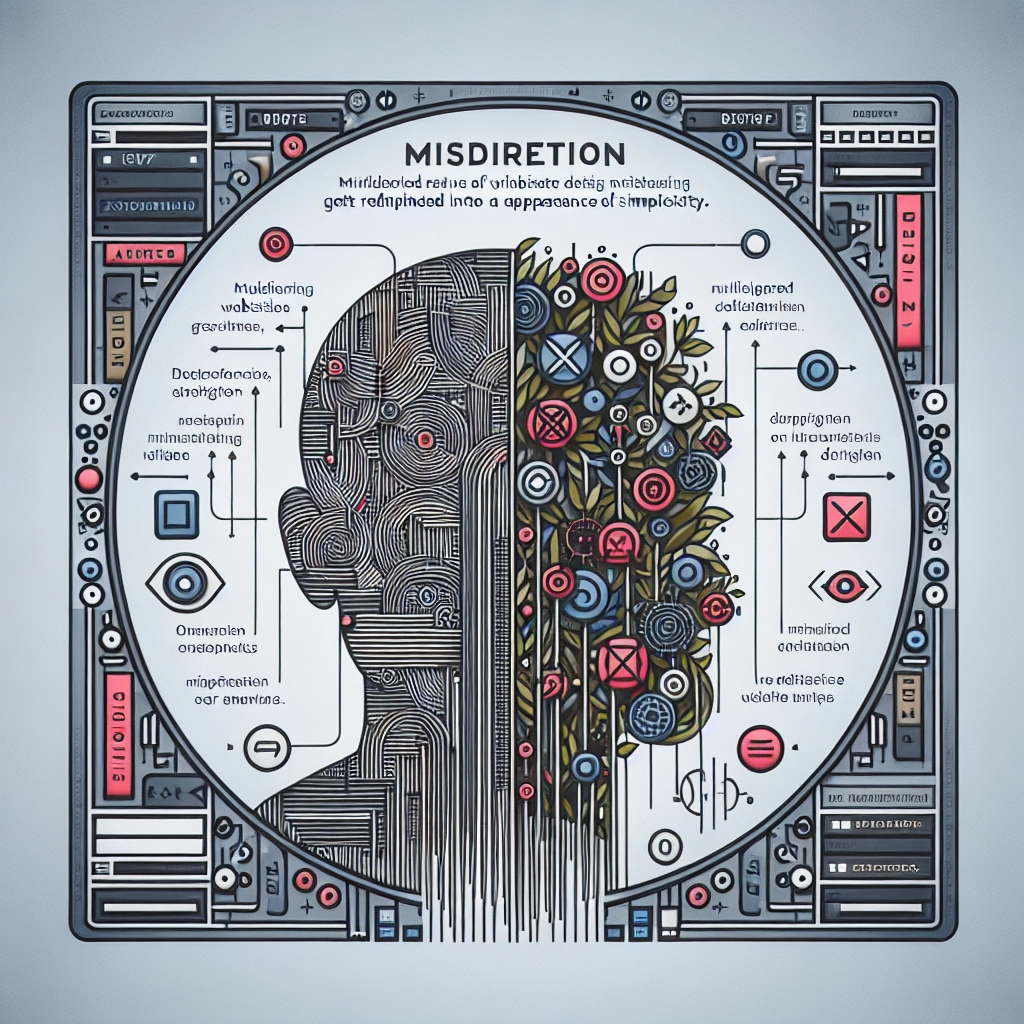Let’s clarify one thing: the idea of simplicity in web design is misleading. We’ve long been told that simplicity is the ultimate design goal, but the reality is much more nuanced. A truly great design isn’t merely about minimizing elements; it involves creating intricate solutions that effectively address user needs alongside technical limitations.
The well-known phrase “Keep it simple, stupid” (KISS) might sound appealing, but in practice, achieving simplicity involves difficult choices, compromises, and even significant technical challenges.
Clients might ask for simplicity, and users often expect it, but how many designers can genuinely attest to achieving this without extensive behind-the-scenes effort? What appears “simple” on the surface often masks a messy and complicated structure beneath. Those who believe simplicity can be easily attained typically haven’t engaged in the intricate process of building effective designs.
Simplicity Equals Mediocrity
Embarking on a design that prioritizes simplicity usually means cutting corners. While clients often prefer sleek aesthetics, that doesn’t always correspond to enhancing the user experience. Designers may end up removing crucial features under the guise of simplicity, which may ultimately frustrate users who seek functionality and versatility.
Take mobile applications, for instance. Many adopt minimalist designs, but a reduction in options doesn’t guarantee user-friendliness. Excessive simplification can diminish context, erode the ability to customize, and exclude essential details users rely on.
Users Don’t Want Simplicity; They Want Power
Here’s the truth: users would rather have control and power over ease of use. Think about the applications we cherish — they possess layers of complexity with powerful functionality.
For example, Google seems straightforward on the outside; however, beneath its surface lies a complex network of sophisticated algorithms and tools that provide extensive control to users. People crave empowerment, which often necessitates more options, depth, and flexibility.
The goal should not be to oversimplify, but to intelligently design complexity that remains user-friendly. A powerful tool can conceal intricate features until needed; this represents the future of design, which embraces the user as knowledgeable rather than assuming they prefer a simplified interface.
"Easy-to-Use" Is a Marketing Illusion
Let’s be honest: when clients talk about an “easy-to-use” site, what they really desire is a well-functioning site that operates efficiently. However, this perceived simplicity frequently sacrifices the genuine needs of users for a false sense of ease. Simplifying for swift development can lead to subpar designs.
Consider this: if you stripped your design to its essentials, would it still cater to your users’ experiences? Too often, there’s a disconnect where clients overlook the trade-offs that come between a streamlined design and actual usability across different scenarios.
The Pitfalls of Simplification: Leaving Users Behind
We must acknowledge that overly simplified designs can alienate users. Many have experienced apps that promised to be user-friendly but ultimately seemed tailored for someone else. Designs that lack the necessary features can frustrate those who expect comprehensive functionality.
The true challenge of design isn’t merely crafting simplicity; it’s about creating solutions that cater to the needs of everyone, including those who require advanced functionalities. In many cases, we simplify design to the detriment of the diverse human experience.
Embrace Complexity. Disregard the "Simplicity" Myth.
It’s crucial to abandon the pursuit of “simple” design. Authentic and effective design is inherently complex. To create genuinely intuitive interfaces, designers must incorporate details and functionalities that might not be immediately apparent. Stripping away these layers in the name of simplicity results in shallow designs that are less effective.
So, challenge yourself: stop prioritizing simplicity. Instead, strive for intelligent complexity — designs that are layered and powerful, allowing users more control. Don’t subscribe to the myth of the “easy”; instead, recognize that exceptional design emerges from understanding when to feature complexity and when to conceal it.
Next time a client requests simplicity, candidly inform them that true simplicity is hard-earned through intricate, demanding work. This is the deeper design truth that many shy away from revealing.
Conclusion: Complexity Is Your Ally, Not Your Adversary
In our minimalistic design-obsessed world, it’s time to acknowledge the truth: simplicity is a misconception. Design should not revolve around stripping elements down to achieve a superficial aesthetic. It’s essential to embrace the complexities that render designs effective, functional, and truly human.
When you peel away the layers of fluff and jargon, what remains is what genuinely matters — and that’s what leads to successful designs.
Welcome to DediRock, your trusted partner in high-performance hosting solutions. At DediRock, we specialize in providing dedicated servers, VPS hosting, and cloud services tailored to meet the unique needs of businesses and individuals alike. Our mission is to deliver reliable, scalable, and secure hosting solutions that empower our clients to achieve their digital goals. With a commitment to exceptional customer support, cutting-edge technology, and robust infrastructure, DediRock stands out as a leader in the hosting industry. Join us and experience the difference that dedicated service and unwavering reliability can make for your online presence. Launch our website.

